When World War II ended in August 1945, six years of bitter conflicted had honed the Royal Navy to a high peak in terms of training, equipment, operational efficiency and combat effectiveness.
This article was submitted to the UK Defence Journal by respected defence analyst Richard Beedall.
Thirty-seven years of relative peace then followed before the Royal Navy next saw serious combat – the brief but bloody Falklands War of April to June 1982. Although the on-going Cold War against the Soviet Union and Warsaw Pact meant that the Royal Navy was theoretically prepared for war at short notice, in practice complacency, incorrect planning decisions, inadequate designs and false economies would cost the Royal Navy and its personnel very dearly.
Television images of the ships of the Task Force departing for the South Atlantic were impressive. However even before combat began, it was obvious to informed observers that the service was taking many serious risks regarding its equipment. For example:
- A critical dependency on a small number of slow, short-range and lightly armed Sea Harrier fighters
- A complete lack of airborne early warning aircraft
- A reliance on unproven ‘high tech’ weapon systems, e.g. the Sea Dart and Sea Wolf missile systems
- A shortage of close-in and point defence weapons – very few WW2 vintage 20mm and 40mm cannons and no modern systems such as the American Phalanx CIWS
- The limited ability of the newest warships (Type 42 destroyers and Type 21 and 22 frigates) to take damage and continue to fight – lightly built with no armour and lacking redundancy
But the situation was far worse than was immediately obvious.
On 4 May 1982, two Argentine Navy Super Étendard aircraft attacked the Task Force. They fired two AM39 Exocet missiles, one of which hit the Type 42 destroyer HMS Sheffield. The ship was abandoned four hours later and sank six days later – the first Royal Navy warship sunk in combat since 1945. Twenty of her crew were killed and 26 injured.
The Report of the Board of Inquiry at HMS Nelson into the loss of HMS Sheffield showed how badly the RN had regressed since 1945. Initially marked “Secret”, a redacted version of the report was released in 2006 and last year a declassified copy of the full report was provided to newspapers. The Board believed that “if all the right reactions had been taken quickly … it might have been possible to frustrate the attack”, however:
- The Captain was a submariner and the Executive Officer a helicopter pilot. As such they both lacked experience with Type 42 destroyers and air defence, and neither was present in the ship’s Ops Room at the time of the attack
- With unfortunate timing, the Anti-Air Warfare Officer had left the Ops Room and was having a coffee in the wardroom, while his assistant had left “to visit the heads”
- When a nearby ship, HMS Glasgow, detected the approaching aircraft, the Principal Warfare Officer in Sheffield’s Ops Room failed to react, “partly through inexperience, but more importantly from inadequacy”
- When the incoming missiles came into view, officers on the bridge were “mesmerised” by the sight and did not broadcast a warning to the ship’s company before the ship was hit
The report states:
“Nobody called the captain. His ship did not go to ‘Action Stations’, did not fire off any clouds of chaff in an attempt to deflect the Exocets, and did not turn towards the incoming missiles in order to narrow the Sheffield’s profile. Moreover, some of the ship’s weapons were unloaded and unmanned, and no attempt was made to shoot down the incoming missiles.”
After Sheffield was hit, things did not get any better as large fires broke out immediately and acrid black smoke quickly spread throughout the ship. Firefighting was largely limited to external boundary cooling … using buckets! The spread of fires was not adequately controlled due to the presence of ignitable material coverings and lack of adequate curtains and sealing to restrict smoke and fires. The Inquiry severely criticised the ship’s fire-fighting equipment, training and procedures and certain members of the crew. The report says “the control of firefighting and other activity after impact lacked cohesion. No emergency HQ1 was established, it was not clear where Command was located, the control of personnel was uncoordinated”.
Numerous small but serious design defects were revealed during the war: the Formica panels extensively used in warships created lethal flying shrapnel shards when subject to blast; some hatches were too small for the passage of men with breathing apparatus; PVC cable insulation and foam furnishings gave off toxic fumes in a fire. Even naval uniforms had serious problems, they were made of nylon and other synthetic materials which melted on to the skin in heat, severely exacerbating burns.
The loss of four warships (six ships in total) during the Falkland’s War was a serious wake-up call for the RN and the next few years saw significant improvements in numerous areas. For example: more realistic damage control training; the introduction of new uniforms made from cotton impregnated with flame retardant chemicals; the widespread installation of new light cannon and point defence systems; and a redesign of the Type 22 frigate.
In the 1990’s I worked in the Arabian Gulf and on many occasions, could compare the regional navies with the post-Falkland’s Royal Navy – often unflatteringly. Whilst the local warships were always smart in external appearance, numerous coats of paint often clogged fixtures and fittings, weapons could not train, and expensive electronic systems had often not worked for years due to a lack of spares and maintenance. For major exercises, undertrained crews seemed to struggle to do much more than get their ship out of port for the photo shoot. In littoral waters, a key communication tool was the mobile phone!
The Falklands War gave the Royal Navy both invaluable combat experience and the prestige of victory. But it is now 36 years since the Falklands War started, and the Royal Navy and the UK government must strenuously guard against falling into a peacetime compliancy that will be expensive to remedy in terms of lives, reputation and national treasure.
Just a few of the many potential issues are:
- The shortage of spare parts and the excessive cannibalisation of these from operational or under-construction warships and submarines
- The [in]adequacy of munition and missile stocks for war
- The extent to which the RN warships can sustain damage and maintain combat effectiveness (when was shock testing last performed on any RN warship?)
- The dependency on shore based training and the use of ‘simulators’ to replace training ships and training cruises
- The impact of very lean manning on both operational efficiency during extended operations, and damage control capabilities. The 6,900 tonnes Type 26 frigate will have a complement of just 118!
- The lack of opportunities for junior personnel to gain experience before being placed in positions of huge responsibility
- The ability of Flag Office Sea Training (FOST) to maintain its high standards with fewer staff, fewer ships passing through, and the Portland naval base long gone
- A dependency on technology (e.g. GPS for navigation) and the ability of crew members to take over when computers and automated systems fail
- The unimpressive showing of RN personnel during some accidents and incidents since 2000
As the last few veterans of 1982 retire from the RN, it is not clear that the Senior Service still has the intangible advantages in terms of doctrine, morale and training that it has held since Admiral Nelson’s day.
The expanding navies of the Middle and Far East may soon regard the RN with the condescending view that it might have once have regarded them.



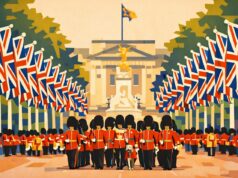
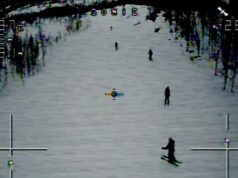
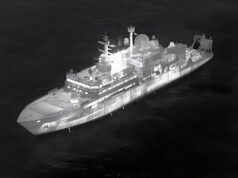

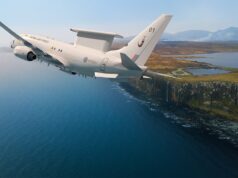
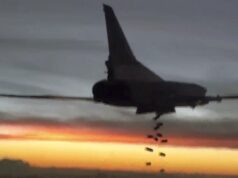
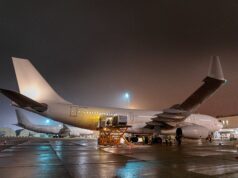

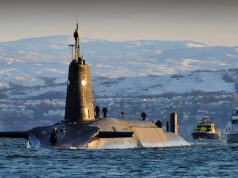
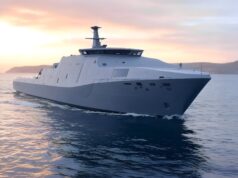

[…] post Peace and the Royal Navy appeared first on UK Defence […]
An excellent and illumnating read – thank you.
You can’t keep applying a band aid to a ruptured artery. Home truths are always the hardest to bear. The Navy was a shambles in the Falklands and proven to be obselete for which the RN must share blame.
Political will must prove the catalyst to restoring National pride and confidence. Serving senior naval personnel and I stress serving officers must stick their necks out and make a stand for a balanced and adequately prepared service.
Really enjoying these opinion type pieces UKDJ. Keep them coming ????
Things do not look good for the United Kingdom Royal navy!
Please explain.
People like that are just a troll. Ignore them and their stupid comments.
I disagree, if the right decisions are made at this point and backed up with adequate financing, I think the future is very bright for the Royal Navy
I completely agree, Chris!
Compared to WHO?
Things have looked better aye, but who can field a better force in today’s world? America certainly, China probably (but it’s not blue water) and maybe India, that’s just about it.
India? Did you see the piece on this website about their navy?
I have said on numerous occasions that the lessons learnt from the Falklands improved the RN immeasurable. LFE cables, Water based hydraulic fluids, improved damage control procedures and equipment, better weapon systems and a need to get into the detail of systems to allow the ship to fight through damage all where tangible improvements.
Whilst I agree with the majority of the contributors points I have differences on a few.
FOST is now in Plymouth and has been for many years. In my time I went through both locations at Portland ( I used to live in Weymouth so loved work ups in Portland!) and Guz. To be honest there is not that much difference in the delivery of OST from either site. Its the people delivering the training that counts and they where as good as ever in either location.
BDR (Battle Damage Repair) and System Engineering from the lowest mechanic/tech to a Warrant officer or Officer was practiced extensively. System knowledge , fall back options, alternative modes of operation, power supplies and work rounds where all known by me as the Department Warrant Officer and the NCOs and lads and lasses who worked with me. I cannot say it still is the case as I have been out for 3.5 years and from experiences of working on RN vessels as a civvy I can see that at times system knowledge is not what it used to be. That may be down to manpower issues, lack of corporate knowledge or maintainers and management not giving a toss but when I know more about the system power supplies than the guy who is still in the RN then something is not right!
Peace makes everyone complacent.
Politicians and the public especially.
Service leaders do the best they can with the tools and resources they are given.
I’m afraid that without more budget the mistakes of yesteryear will once again be made.
I fear that at a fixed £250m budget for a T31 frigate history may be repeating itself again.
Budget!
I had heard about the equipment faliures of the Falklands but reading about the crew falirues blew my mind. No one at their stations and those that were simply stared at the missile as it approached and didn’t even try to do anything to activate the ships defenses or move the ship? It boggles the mind. Obviously you don’t know what you would do or how you would act in that situation and we write this from the comfort of home and safety but that is stil l an almost unforgivable faliure.
I’m gladdened that measures have been taken to improve equipment and learn from those hard lessons but like always we prepare to fight the last war, not the ones our enemies are preparing to fight.
My goodness the HMS Sheffield review is pretty damning. I hope all of lessons learnt never have to be repeated. Peace time certainly does allow a lot of bad habits and complacency to develop, when you look at the recent examples of the US navy where they are colliding with other ships through reliance on the auto pilot I hope the RN has not been operating the same way with the reduction in man power.
Nice top photo. Fearless or Intrepid?
With County class destroyers?
My guess is the 1977 fleet review, things all started to go rats after that…..
Plus a cruiser poss hms blake
Now they want too repeat their ship building mistakes by repeating it by building this ridiculous class of ship called the Type 31.. God help us all, and potty the fools who will be suckered too serve on them. May God Rest Their Souls Ahead Of Time..
And your plan to keep the Surface Fleet at strength is?
Is not the second from left HMS Tiger?
It is
Thanks for that Lee-I had wondered what that funny looking cross between a destroyer and RFA was! The ship that “Good Old Smithy” and “Harold Bloody Wilson” had their UDI pow wow.
Excellent article and an illuminating insight into Sheffield’s fate! As said above it is easy to criticise from the couch but surely a ship on picket duty should have been on a state of high alert. On the other hand maybe this illustrates an unpalatable truth-larger surface vessels are hugely vulnerable to modern missiles no matter what kit they are packing. The RN was the key to the success of the whole operation because the Task Force had (just) the numbers to sustain the loss of the 6 and remain a viable force long enough to get troops ashore
..the ship on which “Good Old Smithy….
Morning Geoff
I agree, those men and the material they were sent on were neither fully fit to fight or materially ready. Strong democracies allow reports to be written, not to criticise but to learn from mistakes, mistakes that were made. No individuals were blamed – all gave evidence to the board that compiled and then realeased the report.
And you also state, if it wasn’t for the RN the battle would have been lost. The RN learned quickly, they adapted and changed processes on the hoof, only professional services can do that.
Certainly looks like HMS Tiger….
I had not heard of her, as I was only 10 by the time of the Falklands.
Looked her up on Wiki.
Was a part of the “Fleet Standby Squadron” of reserve ships for the Falklands, moored at Chatham.
Is this not something the RN could explore, using the RN reserve to crew something more than an Archer P200?
County class Gmd John,I can’t tell which one. I served on a county class destroyer. But the tiger wasn’t in comission at that time.
The statement of complete reliance on unproven tech makes me wonder what the difference is between now and then considering sea cepter hasn’t been combat tested.
Yes, SeaCeptor has not been combat tested, but it has been fired at emulated threats. It has successfully been used to defeat Mirach and Firejet drones in the Qinetiq range off the West coast of Scotland. These drones emulated anti-ship missile profiles up to supersonic speeds. Not sure if we have a drone that can go to the speeds of Brahmos or the hypersonic speeds of Brahmos II?
You could say that as this was part of a pre-planned exercise, the crew weren’t responding to an unexpected threat. But more importantly the system’s performance met and defeated the threat. I have yet to hear of anything bad being said about SeaCeptor except it may not be agile as Aster 15. Its range is much better than expected so should no longer be seen as a point defence missile like the previous Seawolf, but more of an area defence missile.
Back in 2012 the French successfully shot down a GQM-163 Coyote using an Aster 30 missile. The Coyote is designed to emulate supersonic, sea-skimming missiles such as the P800 Oniks and PJ10 Brahmos
General problems with drone testing is they occur in too much a controlled environment. Real world situation, bad weather, surprise, false positives etc stretch the system and crew. On top of that the two are normally designed in parallel, meaning radar charactistics and movement are in tbe predictable end of the missile tech.
Too many systems work in tests, but fail in real combat situations.
Bright side there is now a combination of sea ceptor and aster means 2 chances to fail. Although same in Falklands
It works both ways .
Any attacking ASM tests tend to be a straight line shot at a target that’s either a stationary hulk or a barge with containers on.
No testing of OTH targeting against an aggressive adversary who can detect the targeting transmissions from the search radar at a far greater distance than the radar can paint a picture..
No active ECM or decoys being launched by the target ship.
No maneuvering by the target.
No missiles being thrown up or guns being fired at the missile.
Better start a war then to test if the systems are combat ready.
Steve – yes I was at secondary school during the Falklands war but I followed events very closely.The Royal Navy was in a position to field two different generations of SAM during the war,Seaslug and Seacat superceded by Seadart and Seawolf.Seaslug was known to be completely obsolescent at this point but was used I think as a last ditch distraction weapon on maybe one occasion.Seacat was slow and needed manual tracking to target which made it pretty much useless against anything other than helicopters.Seadart was great at what it was supposed to do at medium/high altitudes but as the Argentine Navy had the system too they were fully aware of its limits at very low level.Seawolf was the newest system and proved capable but as far as I know it had some software bugs that had to be addressed while in combat,from what I read it got confused with multiple targets and couldn’t discriminate or prioritise so basically shut itself down.When the Atlantic Conveyor was attacked I think there was a case of a Seadart missile actually destroying a Seawolf launched to down the incoming Exocet missiles.Now technology has moved on we can be pretty confident that Seaceptor and Sea viper will perform exactly as expected,threat simulation and evaluation must be leagues ahead of what was available in the 1980’s with computer capability as it is now,but as has been said here until they are actually used in a combat situation there will always be a slight margin of doubt.
The seawolf issue was with targets coming in then turning away and the trackers then broke lock and reset to another target.
A software patch cured this issue. As a work around the targets where tracked in TV mode with a man in the loop controlling the tracker.
Sea Cat was old but it had many variants.
The system on the T21 was automatic with Radar and TV tracking. The system was good but let down by a poorly performing missile.
Slug was well past its sell by date . And basically useless.
Dart was ok but the Argentinian Navy had 2 x T42s so new what the capabilities where and had tactics to avoid it. Again post Falklands dart had a lot of upgrades that basically turned it into a fully automatic system that would continue to load and fire until the magazine was empty.
This is a superb article and should be compulsory reading for our political leaders. The most worrying aspect is that we had enough ships and trained men to suffer losses and to overcome using the shear weight of numbers including bringing back into service of many almost obsolete ships and aircraft. We also had political will and committment.
We no longer have these resources and have in recent years become more risk averse as a nation with a focus it seems on humanitarian aid, being a good LGBT employer and ensuring we don’t upset anyone by perhaps shouting an order at them. This might be fine when you are running a council but not the military. Unfortunately, our military only reflects our country, which is not as assertive as it once was, which was demonstrated in Iraq and Afghanistan where we seemed to have lost the will to win. This came from the top and was reflected in a lack resources and a focus on prosecuting our own personnel to appease certain PC lobby groups rather than persecuting the enemy.
Our US ally noticed the change and where after the Falklands the US was interested in our knowledge and experience, which was restated in the First Gulf this is no longer the case. Our status is diminished by this as much as our rather reduced capability has been by successive cuts to the MOD budget.
We still have some great people who are very brave and our allies respect this but I am not sure the leadership from the top is anything like it needs to be and this will sow the seeds of a future defeat or national humiliation as much as a lack of suitable equipment and people.
A start would be to increase defence spending up to 2.25% whilst taking the deterrent programme out of the MOD budget. This would enable a sustainable increase in; personnel numbers, some key equipment programmes could be expanded and allow the purchase of a sensible level of spares and munitions. It would not take much to improve things.
No point if the top stays the same, that is where the trouble lies.
I totally agree. When you own Government looks to target and humiliate the the troops involved with acting out the elected Government’s policy you know something is very wrong!
Today, there is too much emphasis placed on the services to conform to the next Government initiative. I am going to upset a few people on here, so tough, but by pandering to the needs of the few destroys the cohesion and respect of the service. Yes, its nice that we promote that the services LGBT employees are fully encouraged but how does that help our war fighting ability. Lets be honest here, the job of the military is to kill and suppress your opponents military, it is not a “force for good” no matter how you dress up the details. Yes, the training the military receives is excellent for humanitarian support, but that is a by product. The military services are supposed to be politically neutral, however the fact remains that which ever Government is in power they try to put their stamp on how it should be run, operates and performs.
Since the First World War, successive Governments of this land have destroyed the capabilities of the military. Every decade since then political infighting and ineptitude has forced the military to except “crap” equipment not fit for purpose to ensure MPs had support of their local populace, prime examples being the Matillda 1, Fairy Battle, the Type 21 frigate the list goes on.
Based on today’s legal conditions, most of the troops who fought during WW2, Korea would be up on charges of war crimes. Put simply the legal system does not match the Government’s intent and significantly hinders the capability of the military. Something needs to change, the senior officers cannot be trusted as they are too interested in protecting their position and not the good of the service. There is definitely no political will to give the military more authority. It basically all went wrong with the removal of Crown Immunity and forced the military to conform to civilian law. I could rant on, but it would be pointless as nothing will change, if anything it will progressively get worse as normalisation is promoted by the next Government initiative!
No, I totally agree.
If people are upset by an un PC post – tough.
This country and its political establishment need a serious kick up the backside.
A quote from Apocalypse Now seems appropriate: “charging someone for murder out here is like handing out speeding tickets at the Indy 500”.
I think the photo was taken at the 1977 fleet review. The nearest is either Fearless or Intrepid, then Blake, followed by two Batch 2 Counties, and I think a batch 1 County at the end.
Reading the comments, we can all be armchair experts, it can be rather fun, but the first need for the RN is to get the numbers back up. It is worth remembering that the Type 23 was supposed to be 20 in the class, 16 actually built and 3 sold early to Chile. So 13 suddenly becomes the magic number. Likewise the 6 Type 45’s are actually replacing 14 42’s. With the best will in the world a ship, however capable, can only be in one place at one time.
[…] https://ukdefencejournal.org.uk/peace-and-the-royal-navy/?no_cache=1 […]
To the Editor of the Guardian Newspaper.
Dear Sir,
I feel I must point out a few inconsistencies in your report, and I feel very strongly about the way this was reported, despite what the B.O.I. report says.
Before I go into that, I must also point out that I served on Sheffield on that fateful day. You have failed to mention the heroism of some of the crew when going about their duties. You have also failed to mention the effect this has also had on some the crew and this report will do more harm than good to those still suffering from P.T.S.D. myself included. And if it affects me and drives me back into Combat Stress, I will have no choice but to take this to law.
You Said: “Also hidden was the board’s warning that there were “critical deficiencies” in the fire fighting equipment then aboard type 42 destroyers such as the Sheffield.”
I Say: There was no “critical deficiencies” as each piece of equipment was checked daily, and was in tip top condition, you are saying that the experts and engineers were not up to the task.
You Say: “Some members of the crew were “bored and a little frustrated by inactivity” and the ship was “not fully prepared” for an attack.”
I Say: We were not at all bored or frustrated, and I doubt if anyone was, as we were prepared, and very well prepared for war, and we constantly exercised daily on the way to the war zone. Who said the crew were bored and frustrated, name them?
You Say: “The radar on board the ship that could have detected incoming Super Étendard fighter aircraft had been blanked out by a transmission being made to another vessel.”
I Say: This is totally and utterly wrong, there was a satellite communication going from us to our leaders in the UK at the time of the attack.
You Say: “While the ship’s company were aware of the threat posed by Exocet missiles, some appear to have thought the Sheffield was beyond the range of the Super Étendard aircraft, because they were unaware the planes could refuel in mid-air.”
I Say: We were fully briefed on the Argentinean Air Force, once again you have failed to name any names of who those who were “unaware”.
You Say: “The board also concluded it was “unfortunate” that the Sheffield’s captain, the submariner Sam Salt, and his second-in-command, a helicopter officer, had “little or no relevant recent surface ship experience”.
I Say: Captain Salt was a very experienced command officer, can you tell me that if he “little or no relevant recent surface ship experience”. Then why was he given command of another Type 42 shortly after?
You Say: “In the event, nobody called the captain. His ship did not go to “action stations”, did not fire off any clouds of chaff in an attempt to deflect the Exocets, and did not turn towards the incoming missiles in order to narrow the Sheffield’s profile. Moreover, some of the ship’s weapons were unloaded and unmanned, and no attempt was made to shoot down the incoming missiles.”
I Say: There was no time to go to action stations as the attacking aircraft came in under the radar and popped up at very short range to fire the missiles, a matter of seconds. The ships weapons were fully loaded, 4.5” gun, Seadart, and close range weapons, all fully loaded and manned in defence watches, to fight the ship until the off watch crew can get to action stations. I actually fired two rounds of chaff from the 4.5” gun, because I was the on watch gun controller.
You Say: “One of the Exocets slammed into the Sheffield’s starboard side about 8ft (2.4 metres) above the waterline, ripping a hole 4ft high and 15ft long. It penetrated as far as the ship’s galley, where eight cooks are thought to have been killed instantly. Fire erupted within seconds and the ship filled with smoke.”
I Say: Actually the missile came into the engine room, UNDERNEATH the galley, the fire took minutes rather than seconds, and fire fighting crews were at their stations by then.
You Say: “The report says the fire fighting efforts “lacked cohesion” and were “uncoordinated” and that although the crew attempted to tackle the blazes, “it was not clear where the command of the ship was located”.
I Say: There was cohesion as each of us Petty Officers were at places of the greatest danger, for example, I was up on the upper deck 3” rocket magazine, whilst the crew below me were passing up buckets of sea water. The ships command had moved to the bridge as the operations room was unusable.
Yours Sincerely,
Guy Wilson
Ex Petty Officer HMS Sheffield D80 1982.
Been appalled for decades at how quickly the Falklands “lesson” that ships needed more light AAA was ignored after a decade or so & we reverted to single 20mm(on each beam) & now just a 25mm with even less AAA value. We learn lessons at great cost & then forget them again.
Don’t forget that scrapping the Ark Royal, planning to sell off HMS Hermes & Invincable plus planning to withdraw Endurance convinced the Argies we would accept the loss of the Falklands.
Excellent artical The Government always takes money from sources that cannot fight back. They leave public services and armed forces to decline until it impossible to recover the situation. Politicians are quite happy to send our armed forces into battle under resourced. They have ministers tinkering with things that they have a limited knowledge of. Their short sighted approach had cost the country billions of pounds. We are paying for an aircraft with technology originally designed in the UK. Why did we not continue with development of the Harrier? Why did we not invest in an invincible class carrier to keep our pilots and air crews up to operational capability? Final!y why have we built two super aircraft carriers without the escort ships to protect them.
As stated by Frank62 if John Knott the conservative minister had got his way we would not have had the capability to retake the Falklands. Unfortunately we have had short sighted governments for years they never seem to learn from their mistakes. I think one comment sums it all up. In Afghanistan the American nick name for our troops was The Borrowers.
BB ex Warrant Officer R.N.
.Not o
When at the weekend 7/8 April the USA was looking for support to respond to the Syrian gas attack they contacted only France. This says to me that firstly they don’t trust the UK to get involved following the UK defaulting when Parliament blocked a positive military response to the crossing of Obama’s Red Line.
Second One should be very concerned with reports of the political vigour of the newly appointed CDS.
The final choice was with PM. I wonder how he will get along with Williamson?
Thirdly the RN continues to have an extra ordinarily complacent approach to defending itself and sinking the enemy ships. Ships are hopelessly under armed and under manned.
As this article says the Nelson spirit is long since dead if performance in a crisis is a guide.
Very sad to write this, but I think the RNVR should be reconstituted to show the RN some out of the box, out of the mainstream thinking. I’m sorry but PC wont cut it up against a peer enemy.
Portland should be re integrated as a base; Portsmouth is way too vulnerable to attack by enemy special forces.
I left the Royal Navy in 1981 having served 25 years. When the Falklands war took off I phoned to rejoin the navy. I was laughed at and the person said sorry Chief you’ve been out too long you had best join dad’s army. I was peeved I had only been out for 9 months.